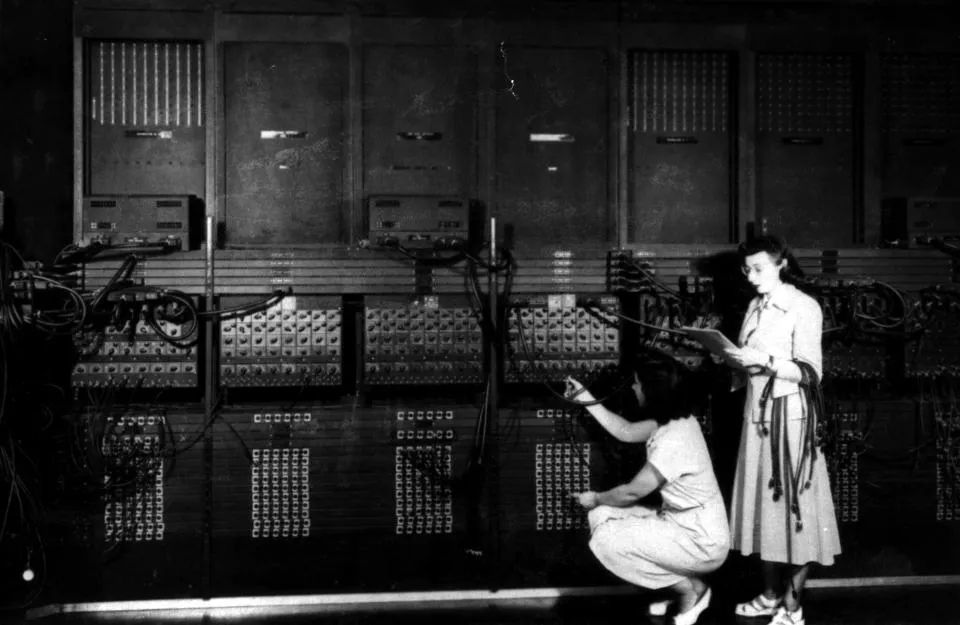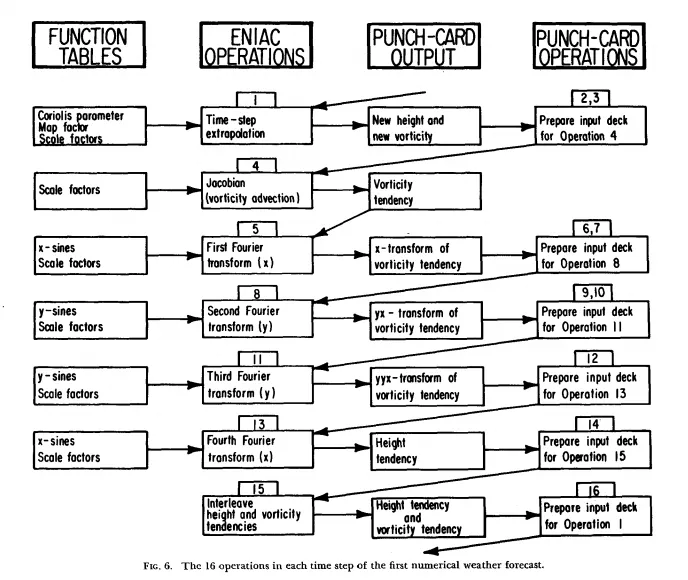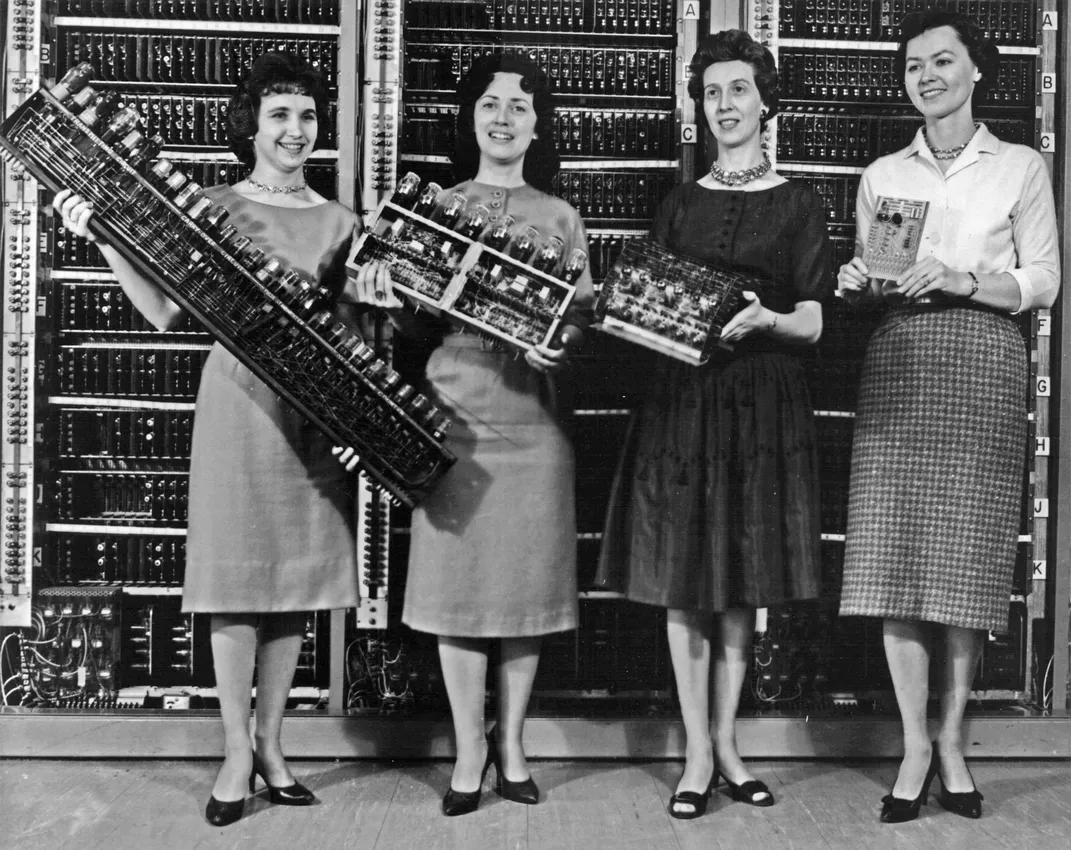The Unheralded Contributions of Klara Dan von Neumann
Despite having no formal mathematical training, she was a key figure in creating the computer that would later launch modern weather prediction
/https://tf-cmsv2-smithsonianmag-media.s3.amazonaws.com/filer/ab/63/ab632460-569d-4cd7-a599-455d02329e29/e474td.jpg)
Editor's note, May 20, 2021: We’ve updated this piece to more accurately reflect Klara Dan von Neumann’s contributions to the experiment that resulted in the first numerical weather predictions in 1950. The piece originally misstated that Klara was in charge of hand-punching and managing the 100,000 punchcards that served as the ENIAC’s read/write memory, when in fact she wasn’t present for this part of the experiment. The story has been re-edited to reflect this information.
A weather app is a nifty tool that predicts your meteorological future, leveraging the strength of satellites, supercomputers, and other modern devices to tell you when to pack an umbrella. Today, computerized weather prediction—like moving pictures or seatbelts in cars—is so commonplace that most smartphone users don’t give it a second thought. But in the early 20th century, the idea that you might be able to forecast the weather days or even weeks ahead was a tantalizing prospect.
One of the most important breakthroughs in weather forecasting took place in the spring of 1950, during an experiment at the Aberdeen Proving Ground, a U.S. Army facility in Maryland. For 33 days and nights, a team of scientists and computer technicians worked tirelessly to achieve something that meteorologists had been working toward for decades: predict the weather mathematically.
This was well before the age of pocket-sized, or even desktop, computers. The team—led by scientists Jule Charney, Ragnar Fjørtoft, John Freeman, George Platzman, and Joseph Smagorinsky—was using one of the world’s first computers: a finicky, 150-foot machine called ENIAC that had been developed during the recent World War. Platzman would later describe a complicated, 16-step process they repeated over and over: six steps for the ENIAC to run their calculations, and 10 steps to input instructions and record output on punch-cards. Minor errors forced them to redo hours—sometimes days—of work. In one tense moment, a computer operator’s thumb got caught in the machinery, temporarily halting operations.
But at the end of the month, the team had produced six groundbreaking weather forecasts (well, technically, "hindcasts," since they used data from past storms to demonstrate the method). An article in the New York Times hailed the project as a way to “lift the veil from previously undisclosed mysteries connected with the science of weather forecasting.” The benefits to agriculture, shipping, air travel and other industries “were obvious,” weather experts told the Times, offering the potential to save crops, money, and lives.
An internal Weather Bureau memo commended “these men” for proving that computer-based forecasting, the cornerstone of modern weather prediction, was possible. This was mostly true—except, it wasn’t just men. Numerous women played critical scientific roles in the experiment, for which they earned little to no credit at the time.

Like the ENIAC’s first programmers—Jean Bartik, Betty Holberton, Kathleen Antonelli, Marlyn Meltzer, Ruth Teitelbaum, and Frances Spence—the computer operators for the 1950 weather experiment were all women. While this highly skilled work would surely have earned them a co-authorship today, their names—Norma Gilbarg, Ellen-Kristine Eliassen, and Margaret Smagorinsky, who was the first female statistician hired by the Weather Bureau and the wife of meteorologist Joseph Smagorinsky—are absent from the journal article detailing the experiment’s results. Before most of the scientists arrived at Aberdeen, these women spent hundreds of hours calculating the equations that the ENIAC would need to compute in the full experiment. “The system that they were going to use on the big computer, we were doing manually,” Margaret recalled in an interview with science historian George Dyson before she died in 2011. “It was a very tedious job. The three of us worked in a very small room, and we worked hard.”
But perhaps the biggest single contribution, aside from the scientists leading the experiment, came from a woman named Klara Dan von Neumann.
Klara, known affectionately as Klari, was born into a wealthy Jewish family in Budapest in 1911. After World War I, in which Hungary allied with Austria to become one of the great European powers of the war, Klara attended an English boarding school and became a national figure skating champion. When she was a teenager, during Budapest’s roaring '20s, her father and grandfather threw parties and invited the top artists and thinkers of the day—including women.
Klara married young, divorced and remarried before the age of 25. In 1937, a Hungarian mathematician, John von Neumann, began to court her. Von Neumann was also married at the time, but his divorce was in progress (his first wife, Mariette, had fallen in love with the acclaimed physicist J.B. Horner Kuper, both of whom would become two of the first employees of Long Island’s Brookhaven National Laboratory). Within a year, John and Klara were married.
John had a professorship at Princeton University, and, as the Nazis gained strength in Europe, Klara followed him to the U.S. Despite only having a high school education in algebra and trigonometry, she shared her new husband’s interest in numbers, and was able to secure a wartime job with Princeton’s Office of Population Research investigating population trends.
By this time, John had become one of the most famous scientists in the world as a member of the Manhattan Project, the now-notorious U.S. government research project dedicated to building the first atomic bomb. With his strong Hungarian accent and array of eccentricities—he once played a joke on Albert Einstein by offering him a ride to the train station and then intentionally sending him off on the wrong train—he would later become the inspiration for Stanley Kubrick’s Dr. Strangelove. While Klara stayed behind, working full-time at Princeton, John moved out to Los Alamos, New Mexico, running the thousands of calculations needed to build the first of these weapons of mass destruction. His work came to fatal fruition in 1945, when the U.S. dropped two atomic bombs on Japan, killing as many as 250,000 people.

After the war, John decided to turn his mathematical brilliance toward more peaceful applications. He thought he might be able to use the ENIAC—a powerful new computer that cut its teeth running calculations for an early hydrogen bomb prototype—could be applied to help improve weather forecasting.
As John began to pursue this idea, getting in touch with top meteorologists in the U.S. and Norway, Klara came to visit him in Los Alamos. Living apart during the Manhattan Project had been hard on their marriage, and Klara had suffered a miscarriage back in New Jersey, but the trip rekindled sparks between them. By this time, Klara had become quite mathematically adept through her work at Princeton, and she and John began to collaborate on the ENIAC.
“I became Johnny’s experimental rabbit,” she told Dyson years afterward. “I learned how to translate algebraic equations into numerical forms, which in turn then have to be put into machine language in the order in which the machine has to calculate it, either in sequence or going round and round, until it has finished with one part of the problem, and then go on some definite which-a-way, whatever seems to be right for it to do next.”
The work was challenging, especially compared to modern computer programming with its luxuries like built-in memory and operating systems. Yet, Klara described to Dyson, she found coding to be a “very amusing and rather intricate jigsaw puzzle.”

In the acknowledgements of the 1950 paper detailing the first numerical weather predictions, the authors thank Klara for her “instruction in the technique of coding for the ENIAC and for checking the final code.” But what is undoubtedly her most impactful contribution to the experiment took place several years prior: helping to transform the ENIAC from a rigidly hard-wired machine into one of the first stored-program computers, more akin to today’s personal computers. Both Klara and John felt this was a necessary improvement for future applications like the weather experiment, as it would allow them to store a vast repertoire of commands in the computer’s memory.
In 1947, Klara and Nick Metropolis—a Greek-American mathematician and computer scientist, and leader of the Los Alamos computing group—collaborated on a plan to implement this new mode on the ENIAC, and in 1948 they traveled to Aberdeen to reconfigure the machine. After training five other people to program and run the ENIAC (two married couples and a bachelor: Foster and Cerda Evans, Harris and Rosalie Mayer, and Marshall Rosenbluth), they worked for 32 days straight to install the new control system, check it, and get the modified machine up and running. By the end of the trip, Klara had reportedly lost 15 pounds, and it took her several weeks and numerous doctor’s visits to recover from the experience. But she still managed to write a full report on the conversion and use of the ENIAC as a stored-program computer. “The method is clearly a 100% success,” John wrote at the time.
By the time Charney and his team of scientists arrived at Aberdeen in early 1950, Platzman would recall years later, the “ENIAC had been operating in the new stored-program mode for over a year, a fact that greatly simplified our work.” In a letter to his wife written during this first week, Platzman gushed: “The machine is a miracle.” The ENIAC was still rudimentary: It could only produce 400 multiplications per second, so slow that it produced rhythmic chugging noises. But after working around the clock for over a month, the team had six precious gems to show for their efforts: two 12-hour and four 24-hour retrospective forecasts.
Not long after the weather experiment concluded, tragedy befell the von Neumann family. John von Neumann was confined to a wheelchair in 1956, and succumbed to cancer a year later, (likely due, at least in part, to his proximity to radiation during the Manhattan Project). Klara wrote the preface to his posthumous book, The Computer and the Brain, which she presented to Yale College in 1957. In it, she briefly described her late husband’s contributions to the field of meteorology, writing that his “numerical calculations seemed to be helpful in opening entirely new vistas,” but gave no mention of her own role.
Klara’s work with computers seems to have tapered off even before John’s death. Whatever her reasoning may have been for this, it was in line with the prevailing trend at the time. Janet Abbate recounts in her 2012 book Recoding Gender how, as the public perception of computers and their value to society evolved throughout the 1950s and ’60s, the number of women hired for those roles shrank rapidly. Abbate writes that, while the women who made up most of the workforce in the early days of coding “would have scoffed at the notion that programming would ever be considered a masculine occupation,” that’s exactly what happened within a matter of years. Today, less than 8 percent of software developers worldwide identify as women, nonbinary, or gender nonconforming.
While female representation in the fields of science, technology, engineering, and math has increased as a whole since the 1970s, according to the U.S. Census Bureau, the number of women working in computing roles has actually declined over the past few decades. But without their early contributions to the field, we might have missed out on the breakthrough that led to modern weather prediction, or any number of scientific advancements. So the next time you scroll through your weather app before deciding whether to don a raincoat, think of Klara and the other women who helped make it possible.